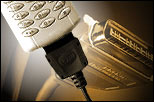BPL, WiMax electricity smart meters coming to NSW

NSW Premier Morris Iemma is promising an early rollout to smart electricity meters that could use broadband over powerline, WiMax or GPRS to communicate with electricity boards -- but delays are already looming over the nascent deployment.

Deploying smart electricity meters have been floated as one way of reducing energy consumption and therefore infrastructure spend -- ten percent of the network is only used during one percent of the year according to the Premier, who announced last week a plan to take the devices into homes across NSW.
Smart meters are able to send usage readings to the electricity providers, and receive price information from providers via machine to machine (M2M) communication -- where two machines communicate with each other without human intervention, typically over wireless networks.
The wireless networks being trialled for the smart meters at present are GPRS, Distribution Line Carrier (DCL) and broadband over powerline (BPL), an Energy Australia spokesperson told ZDNet Australia, adding that a WiMax trial will be started soon.
The spokesperson said that various technologies may be implemented in different locations, depending on how well they perform.
Over these networks, consumers will receive information on their mobile phones or on in-house displays, saying how much electricity they are using and the price at which they are using it. In turn, the providers will be able to keep their finger on the pulse of demand.
According to a spokesperson for the Department of Water and Energy, this is the type of smart meter the government wants to roll out.
"We support the rollout of smart meters that can provide information to the household on their electricity consumption," the spokesperson said, adding: "Certainly some form of communication functionality is what the government needs to see."
A hasty rollout of this technology is not likely, Energy Australia's spokesperson said, as NSW is the first state to trial the technology, and the trials will not be completed for 12 to 18 months.
There are 8,600 people involved in a trial of smart meters: 7000 in testing the communication technology and 1,600 involved in a dynamic peak pricing trial, where users are charged 6c/kwh during off peak times and 8c/kwh during peak times.
During a dynamic peak event, when the network is particularly strained, the cost will rise even further to between AU$1 and AU$2/kwh, in order to discourage household electricity use during these times.
There will be 12 such events during the year, the spokesperson said, for which the users will receive between four and 24 hours warning.
Part of the reason the trials take so long, the spokesperson said, is that users' price sensitivity drops after about six months, and Energy Australia needs to test if the price differences will reduce energy usage in the long term.
Preparing the back office for the massive influx of data when thousands of households send their consumption information to the provider has also taken some time, but its spokesperson said Energy Australia is ready for the challenge: "Our back office is already in order to be able to push the button."